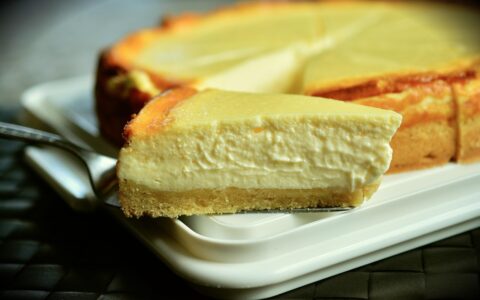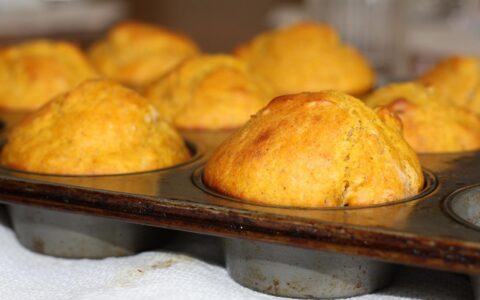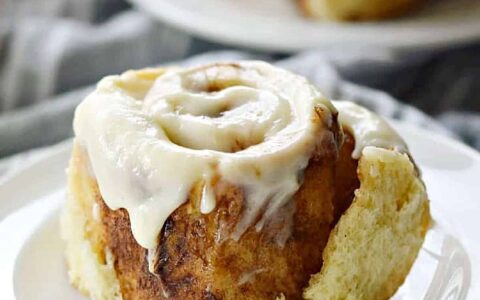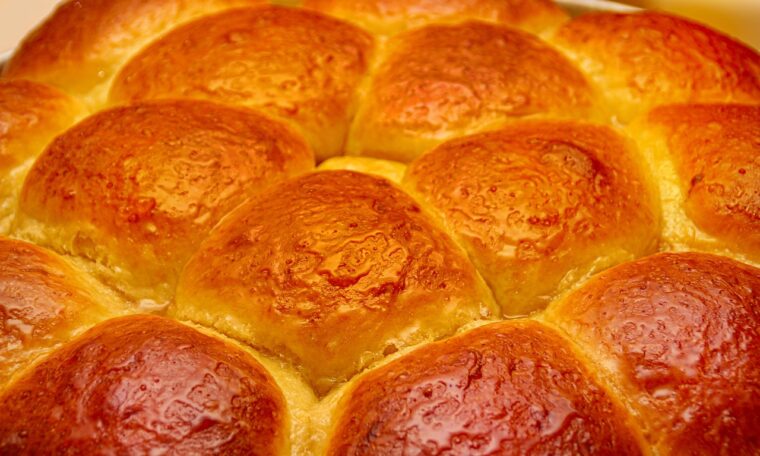
Win Your Next Pageant
Thank you for reading this post, don't forget to subscribe!Get Pageant Questions Written By A Miss Universe Judge
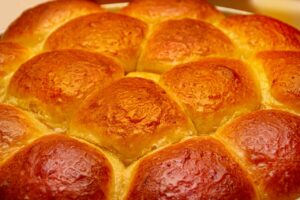
The Art of Brioche: A Buttery Journey Through French Baking Tradition
Few breads embody the luxurious side of baking quite like brioche—its golden crust, feather-light crumb, and rich, buttery flavor have made it a global icon of French patisserie. With roots stretching back to medieval Normandy, this “enriched” dough (loaded with eggs and butter) walks the perfect line between bread and pastry. More than just a vehicle for burgers or French toast, brioche represents centuries of culinary refinement, where humble ingredients transform into something extraordinary through patience and technique.
From Peasant Loaves to Royal Tables: A Brioche History
The story of brioche begins in 16th-century France, where it evolved from simple egg-based breads:
- 1400s: Early versions called pain bénit (blessed bread) were served at church ceremonies.
- 1650s: French bakeries formalized the recipe, with Normandy’s high-quality butter as the star.
- 1789: Marie Antoinette’s (misattributed) quote “Let them eat brioche” reflected its status as a luxury item.
- 1800s: Chef Antonin Carême included brioche in haute cuisine, shaping modern versions.
Originally baked in fluted tins, today’s brioche buns showcase the same tender richness in a versatile, handheld form.
The Science of Enriched Dough: Why Brioche Stands Apart
What makes brioche so uniquely tender yet structured? The magic lies in its chemistry:
1. Fat’s Role
- Butter (25-30% of flour weight): Coats gluten strands for tenderness.
- Egg yolks: Lecithin emulsifies fat and liquid for a silky texture.
2. Sugar & Yeast Balance
- Sugar (10% of flour weight): Feeds yeast but slows fermentation—hence brioche’s long rise.
- Egg whites: Proteins provide structure without toughness.
3. Temperature Control
- Chilled dough: Prevents butter from melting during kneading.
- Slow proofing: Develops complex flavor over 12+ hours.
Cultural Icon: From Breakfast to Burgers
Brioche’s versatility has made it a global staple:
In France:
- Brioche Nanterre: Classic loaf with twin domes
- Brioche à tête: Fluted mold with a “head”
Global Adaptations:
- USA: Burger buns and French toast
- Japan: Melon pan (sweet crusted buns)
- Italy: Panettone (holiday brioche with fruit)
Classic Brioche Buns Recipe
Pillowy-soft, buttery, and perfect for burgers or sandwiches.
Prep Time: 30 mins (+ 12-18 hrs. chilling/proofing)
Cook Time: 18-20 mins
Yield: 12 buns
Equipment Needed (Amazon Deals, Buy Now, Click On Link Below)
🥖 For the Dough:
-
Mixing bowls – for combining and proofing the dough
-
Stand Mixer with Dough Hook – highly recommended for this enriched dough
-
Measuring Cups and Spoons – for accuracy
-
Digital kitchen Scale – for precise flour and butter measurements (especially helpful with brioche)
-
Whisk – to mix eggs and liquids
-
Rubber Spatula or Dough Scraper – for mixing and transferring dough
-
Plastic Wrap – to cover dough while rising
🧈 For Shaping & Baking:
-
Baking Sheet – to bake the buns
-
Parchment Paper or Silicone Baking Mat – to prevent sticking
-
Bench Scraper – to divide dough evenly
-
Pastry Brush – to apply egg wash for a glossy finish
-
Oven Mitts – for handling hot trays
-
Cooling Rack – to cool buns evenly
Optional but Helpful:
-
Proofing Box – to help dough rise consistently
-
Round Cookie Cutters – if shaping perfectly uniform buns
-
Thermometer – to check doneness (internal temp ~190–200°F)
Ingredients
For the Dough:
- 3½ cups (450g) bread flour
- ¼ cup (50g) granulated sugar
- 1 tbsp (10g) instant yeast
- 1½ tsp (9g) salt
- 4 large eggs, room temperature
- ½ cup (120ml) whole milk, lukewarm
- 1 cup (225g) unsalted butter, cubed & chilled
- 1 tsp vanilla extract (optional)
For Finishing:
- 1 egg + 1 tbsp water (egg wash)
- Sesame seeds (optional)
Step-by-Step Instructions
1. Mix the Dough
- In a Stand Mixer , combine flour, sugar, yeast, and salt.
- Add eggs, milk, and vanilla; mix on low until combined (~3 mins).
- Increase to medium; knead 5 mins until smooth and elastic.
2. Incorporate Butter
- With mixer running, add cold butter cubes one at a time.
- Knead 8-10 mins until dough passes the “windowpane test” (stretches without tearing).
3. First Rise
- Transfer to a bowl; cover and refrigerate 12-18 hours (overnight).
4. Shape & Second Rise
- Divide dough into 12x 85g pieces. Roll into tight balls.
- Place in greased pan; cover and proof at 75°F (24°C) 2-3 hours until doubled.
5. Bake
- Preheat oven to 375°F (190°C).
- Brush with egg wash; sprinkle seeds if using.
- Bake 18-20 mins until deep golden. Cool on a rack.
Pro Tips
✔ Butter Temp: Should be cold but pliable (60°F/15°C).
✔ Under proofed? Dough springs back when poked.
✔ Storage: Freeze unbaked dough balls for fresh buns anytime.
Troubleshooting
- Dense texture? Over proofed or butter melted during mixing.
- Pale crust? Brush with egg wash twice (before and during baking).
Enjoy warm—the butter aroma is irresistible! 🧈
Why Brioche Endures
- Versatility: Equally at home in savory sandwiches or as a sweet treat.
- Technical Reward: Mastering enriched dough builds baking confidence.
- Sensory Joy: That first pull-apart of a fresh bun is pure bliss.
Ready to Bake? This recipe balances tradition with practical steps for home bakers. Whether for burgers, bread pudding, or simply slathered with jam, brioche buns elevate any meal.
Fun Fact: The world’s largest brioche weighed 441 lbs (200kg) and was baked in France in 2016. Will yours be next? 🎉 ownthatcrown.com



 Subscribe to Our RSS Feed
Subscribe to Our RSS Feed
